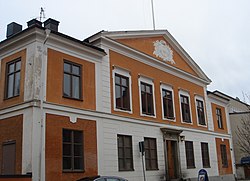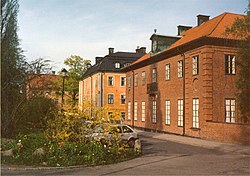Active nations
Nation | Foundation year | Acronym | ||
|---|---|---|---|---|
| Stockholms nation | c. 1649 | Prof. Coco Norén | Stocken |  |
| Uplands nation | 1642 | Prof. Björn Victor |  | |
| Gästrike-Hälsinge nation | c. 1646 | Prof. Anders Virtanen | GH |  |
| Östgöta nation | 1646 | Prof. Ulf Pettersson | ÖG |  |
| Västgöta nation | 1639 | Prof. Bertil Wiman | VG |  |
| Södermanlands-Nerikes nation | 1595 | Per Ström | Snerikes |  |
| Västmanlands-Dala nation | 1639 | Prof. Johan Sundström | V-Dala |  |
| Smålands nation | 1663 | Prof. Mattias Dahlberg |  | |
| Göteborgs nation | 1667 | Prof. Per Hansson |  | |
| Kalmar nation | 1663 | Prof. Anders Ahlén |  | |
| Värmlands nation | 1660 | Prof. Lars Burman |  | |
| Norrlands nation | 1646 | Prof. Cecilia Pahlberg |  | |
| Gotlands nation | c. 1663 | Prof. Lars Magnusson |  |